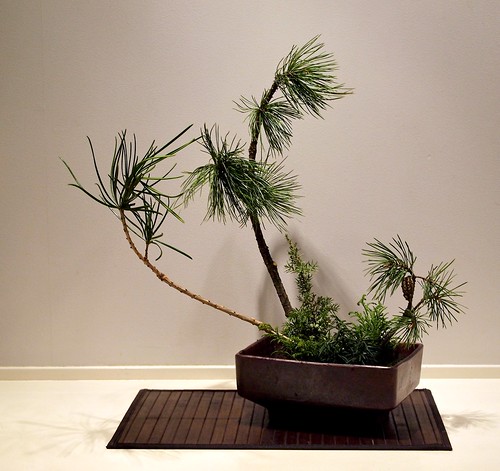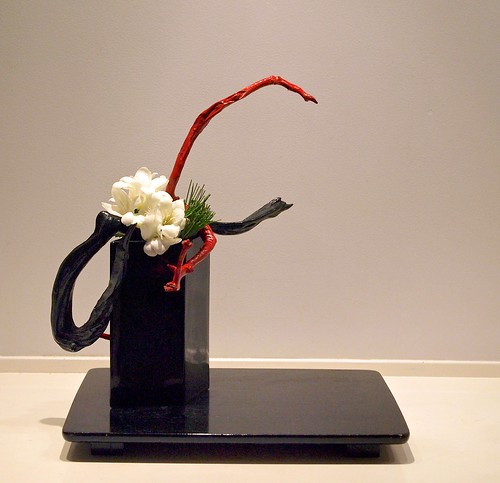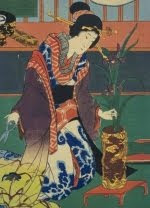Macedonian pine, Japanese ambrella pine, Scots pine, Juniper, Tuja and Taxus.
Moribana, naturalistic freestyle, only branch materials, mass and line.
Moribana, naturalistic freestyle, only branch materials, mass and line.
Evergreen trees have traditionally had a strong position in ikebana. Their sturdy character and the fact that they stay green even in the hardest winter brings a message of hope and stamina. Working with evergreen materials, you'll find that you're capable of making a full ikebana arrangement with local materials even in the winter time. You'll probably also be surprised by the calming effect of green materials and the confidence they inspire.
Macedonian pine, Norwegian Spruce cones.
Mass and line, focus on cones, horizontal arrangement.
Mass and line, focus on cones, horizontal arrangement.
One of the most important things to learn in ikebana is to study the materials well and identify the different shapes and expressions in plants. Since contemporary ikebana often have a more abstract expression there are many possibilities to show these inherent qualities in the materials by contrasting them with each other. For example this is often done by contrasting mass and lines in the composition.
Needle trees, like Pine, also goes well with dried branches and makes a very poetic contrast when used together with fresh flowers. The tender quality of flowers that attracts our minds today and are gone tomorrow, is totally different from the long-lasting energy of the Pine. Together they make an even stronger expression.
Needle trees, like Pine, also goes well with dried branches and makes a very poetic contrast when used together with fresh flowers. The tender quality of flowers that attracts our minds today and are gone tomorrow, is totally different from the long-lasting energy of the Pine. Together they make an even stronger expression.
Painted driftwood, Freesia and Macedonian pine.
Mass and lines, dried and fresh materials.
Mass and lines, dried and fresh materials.















No comments:
Post a Comment